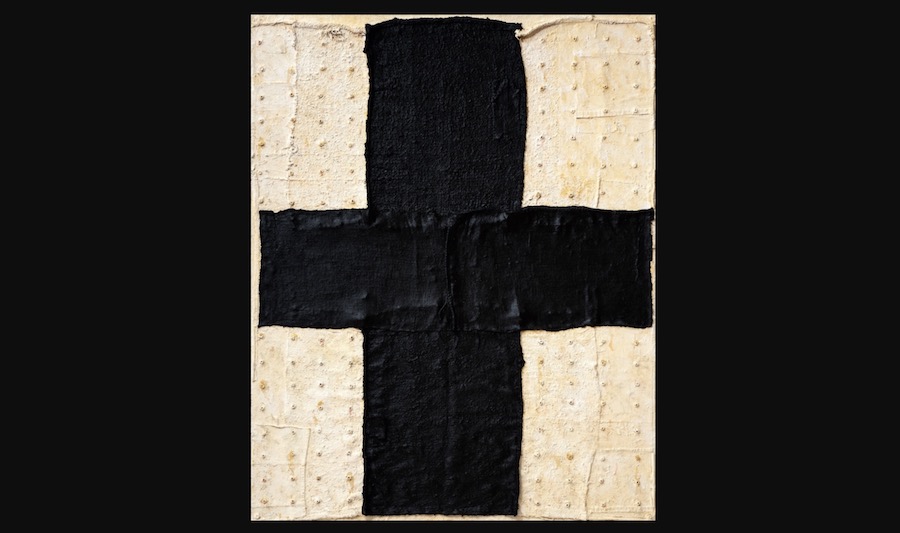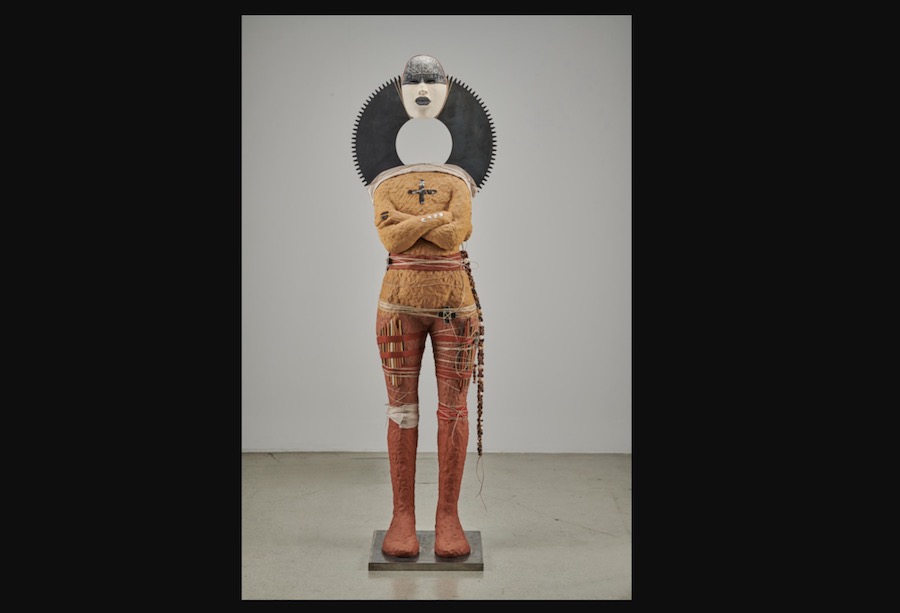The Whitney Biennial, curated by Chrissie Illes and Meg Onli, now in its 81st incarnation, is America’s longest-running survey show. It features the work of 71 eclectic artists and two collectives. This year, there are a lot of video works, some traditional and decidedly untraditional paintings, sculptures, installations, and an emphasis on what artist LigiaLewis calls a” dissonant chorus”, amplifying the voices of marginalised artists. The plethora of problems 2024 faces, gender, racism, and ageism, are well explored in this latest Biennial. Additional curators for film and performance provide a robust addition to the show.

Several pieces jumped out and immediately seduced me. Suzanne Jackson’s luminous “paintings” use the acrylic medium as an armature, creating thickly layered pigment suspended in air or curving off walls.

Jamaican-born Mavis Pusey lived and worked near Whitney, once an abandoned neighbourhood. Her paintings reflect the urban desolation of the area during the 70s, and her palette has a decidedly retro power: orange wood shutters, shades of primary greens, oxblood red, and obsidian stripes.

Gorgeously hued oil on linen paintings of Maja Ruznics evokes her time in an Austrian refugee camp as she and her family fled war-torn Bosnia. Figures morph from a tonal rhapsody of pinks, emerald green sky blue, bodies floating as corresponding lines bisect the perimeter.
I loved Kiyan Williams’s “Ruins of Empire”, a model of the north section of the White House, made of earth and gently eroding and shifting to the ground. There’s also an adjacent sculpture of my old friend Marsha P. Johnson (1945-1992), immortalized in Tourmaline’s video, housed in an embellished arch, gorgeously greeting viewers as the first visible piece on the fifth floor. Marsha has become an icon of gay liberation but died an inglorious and unsolved death, her body found in the Hudson River, near the piers where she roamed and reigned.
British artist Isaac Julien created my favourite installation, “Once Again…(Statues Neve Die)” (Top Photo).The five-screen installation explores the life and work of Harlem Renaissance giant Alain Locke (1885-1954) and includes two sculptures. This “poetic restitution” addressed black male gay experiences, creating an imaginary conversation between Locke, collector, and philanthropist Albert C. Barnes.

Feminism is well repped, with Harmony Hammond’s four minimalist and quasi-geometric paintings that evoke a Gees Bend simplicity. The works are made from reused fabrics and paint and have a subtle minimalist power. Mary Kelly’s exploration of ageing uses a calendar framework to mark the deaths of friends, her own ageing and reflections on mortality.

Four sculptural figures by Rose Simpson share matriarchal ancestry and herald communication. Mary Lovelace O’Neal’s 1990 canvases highlight bold brushwork contrasted with AbEx-choreographed paint drips.
One visit to the Whitney is not enough to digest this show, and I will be returning soon to check the progress of William’s disintegrating White House. There are many videos to watch and performance pieces to view. The ensuing conversation about what was included, who was left out, the clarity of direction, what was addressed and what was not will keep New York art lovers involved, excited, frustrated, and interested.
And isn’t that the point of a wide-ranging survey that reflects this turbulent year?
Top Photo: Isaac Julien, Iolaus/In the Life (Once Again. . . Statues Never Die), 2022 All photos Courtesy © Whitney Museum 2024
Read More About The Whitney Biennial

